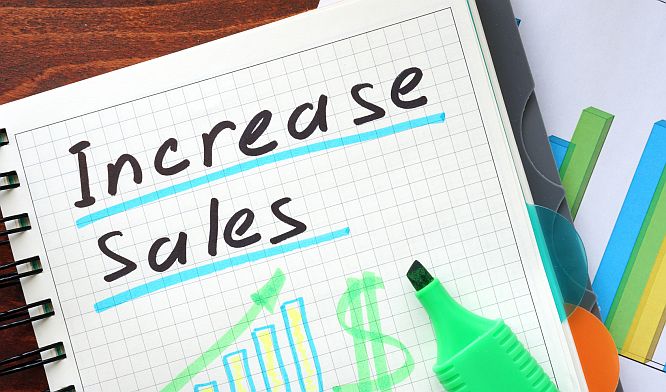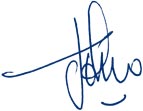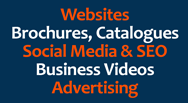Opening Sales Statement that Gets You a Sales Appointment

YOU’VE GOT just 8 short seconds to grab your prospect’s attention and land an executive sales appointment. This story by sales guru Tony Parinello shows you how.
I like to use this guy’s home-spun yarns because he mixes them up well with very real applicable tactics you can apply yourself. And who of us can’t use a few tips on making a sale? — John
PARINELLO BEGINS:
Before you pick up the phone to make a sales call to an executive, I’d like to suggest you remember the following true story: A few months ago, one of my salespeople, Daniel, had some car problems, so I offered to give him a ride to work.
Not wanting to pass up the opportunity to do a little one-on-one role-playing, I suggested we go over some appointment-setting phone skills. I’ve had a long-standing, well-proven statistic that you have just eight seconds to grab an executive’s attention whenever they pick up their phone.
Daniel was a bit skeptical about my eight-second standard. He looked at me and said, “Boss, eight seconds is too short a period of time! That’s hardly enough time to take a deep breath, let alone make a meaningful opening statement.”
We happened to be waiting at a red light when he said this. As the light turned green, I kept my foot on the brake and started counting: “One thousand one, one thousand two….” People started honking. By the time I got to “one thousand four,” Daniel was begging me to get moving.
By the time we hit the sixth second, the guy behind us was starting to get out of his car, and Daniel was looking for a place under the floorboards to hide. When I finally hit eight, the intersection was a symphony of honking horns, “pointing fingers” and shouting mouths.
I hit the gas. Daniel’s never questioned me again on how long eight seconds really is or whether you can make an impact in that length of time. Let’s say now that you understand what motivates people to buy; you know the relevant specifics about your product, service or solution; and you have a good idea about the strategies at your disposal for contacting people who may give you new business.
When you find yourself getting ready to pick up the phone to call an executive, what do you say? I’m going to assume that your goal for picking up the phone is to develop new business. I’m also going to assume that:
- You’ve decided to use the phone to do this, either by means of a follow-up call on a written communication (see my prior article on this topic), or as your first contact with the target business.
- Your aim is to get an appointment or create the next step with a top executive who is the person who can actually buy whatever it is you’re selling.
You have three big goals when it comes to developing an opening statement that works. You want to:
- Make it sound conversational.
- Deliver it with confidence.
- Get a favourable interruption–one that will put your prospect in control as soon as possible.
Five Key Opening Statement Components
You’re picking up the phone to call your prospect. For right now, let’s assume you actually do get through to the executive. Here are the five key ingredients your opening statement needs to contain:
An Introduction
Usually, when an executive (or anyone else) picks up a direct line, they say their name: “This is Jane Smith,” or “Jane Smith speaking.” Your first step will be to repeat this person’s name. Keep things formal for now – use Mr. or Ms., then the contact’s last name.
Prospect: This is Jane Smith.
You: Ms. Smith?
Prospect: Yes.
This first step will earn you Ms. Smith’s undivided attention. Whatever she was doing prior to you saying her name, she’s now stopped doing. She’s paying attention to you, and that’s a good thing!
What most salespeople do now – despite ample and endlessly repeated evidence that they shouldn’t – is say something like this: “Hi, Ms Smith. This is Will Perish, with the ABC Insurance Company.”
Unless your name is, say, James Bond, or your company affiliation is, say, the Prize Disbursement Division of OzLotto, I can tell you exactly what’s going to happen next in the vast majority of such calls: The prospect will respond to this self-defeating “verbal handshake” by tuning out, asking you to send written information, pretending the building just caught fire, or otherwise disengaging from the call. In other words, you’ll have only been on the line about a second and a half, and you’ll be done.
The Pleasantry
Here’s an alternative plan. What I’m about to tell you will probably contradict what you’ve been taught. Do it anyway. When Jane Smith says “Yes,” you’re going to respond with something positive and enthusiastic, something that doesn’t directly identify you, your company or the product or service you eventually want to discuss. It’s too early in the relationship for you to pass along that kind of information. Instead, you’re going to use a pleasantry, such as one of these:
- “It’s an honour to finally speak with you!”
- “Thanks for picking up the phone!”
- “Thanks for taking my call.”
- “Your time is important. Let me cut to the chase.”
Get the idea? Each and every one of these pleasantries will do a far better job for you than simply volunteering your name and company affiliation at the outset of the conversation. Or saying something totally lame like “How are you today?” or “Do you have a minute?”
The Hook
Immediately after your pleasantry, you’re going to catch the person’s attention by using a hook that’s keyed directly to something likely to be of interest to this prospect.
“We’ve helped (three of the top five widget corporations reduce overhead costs by twelve percent this quarter – and they did it without laying off staff or sacrificing product quality).”
Now there’s a tangible benefit if ever there was one! Keep your hook focused and just one or two sentences long, and you can’t go wrong.
The Interruption
More often than not, here’s where you’ll get interrupted if your hook is doing its job. Your prospect is likely to cut in and say something along the lines of one of these statements:
- “This sounds interesting – tell me all about it.”
- “I haven’t heard of this before, but I must admit it sounds vaguely interesting.”
- “I have absolutely no interest.”
As I said, you’ll almost certainly get interrupted by this point. For the sake of completeness, though, you need to finish developing your opening statement. You need to know what to say in those cases where you don’t get interrupted at this point.
Naming Names
Once you’ve shared your hook, the other person knows the reason for your call – the cat’s out of the bag. This is the perfect time to identify yourself and, if you like, your organisation. If you choose to identify the name of your business, give it a brief “commercial.” What you say will fit in one sentence. It should sound like this: “This is Will, Will Prosper, with ABC Insurance Company – the hardest-working company in the insurance industry today.”
Your Ending Question
If you don’t get interrupted by this point, you’re going to conclude your opening statement with an ending question that incorporates some element of time. Try one of these:
- “Ms. Smith, does this touch on issues that are of concern to you this (month/year/quarter)?”
- “Are you wanting to accomplish something like this by the end of this (quarter/year)?”
- “Is this something you’d like to explore further?”
- “Who on your team would you like for me to continue this conversation with between now and the end of this business (day/week)?”
Putting It All Together
Here’s an example of an opening statement that works. Yours shouldn’t sound exactly like this one, but it should be about this long, and it should, like what follows, hit all the bases you’ve been reading about.
Prospect: “This is Jane Smith.”
You: “Ms. Smith?”
Prospect: “Yes….”
You: “(Pleasantry) It was a pleasure to read that your company has successfully expanded into the European marketplace.
By the way… (Use your Hook) after studying another client’s operation, we suggested an idea that provided revenue gains of more than $25,000 per year. The real surprise is that we did this without taking one bit of Acme’s hard-earned capital.
Introduce your Name: This is Will Prosper at Zenith.
Ending Question: Acme’s impressive results may be tough to duplicate. But would you be open to taking the next step between now and the first of the year?”
Again, you shouldn’t try simply to insert your company specifics into the script you see above.
You should use all the ideas in this article to craft an opening statement that is uniquely yours and that best fits the business you’re pitching.
Until next time… Onwards and Upwards!

John
If you want to talk about creating the best opening statement for your sales team, give John a call 0414 955 743 – advice is totally free of charge.

